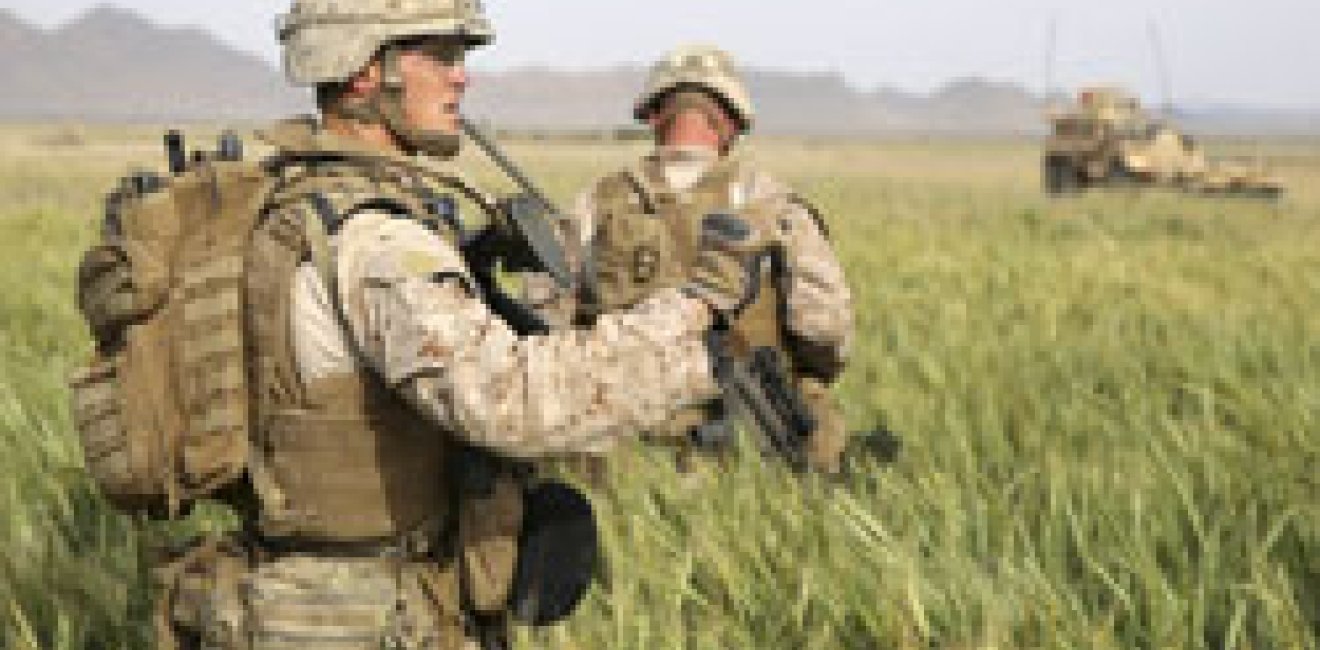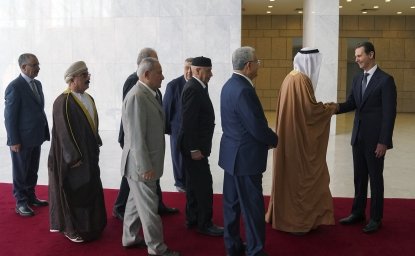After 13 Years, War in Afghanistan Grinds On
"Even if the war in Afghanistan is ending for U.S. combat forces, it isn't ending for Afghans anytime soon," writes Michael Kugelman.
"Even if the war in Afghanistan is ending for U.S. combat forces, it isn't ending for Afghans anytime soon," writes Michael Kugelman.

Tuesday marks the 13th anniversary of the war in Afghanistan–America’s longest war.
For U.S. combat troops, the end is in sight: By Dec. 31, most of them will have been withdrawn.
Unfortunately for Afghans, and their neighbors affected by the withdrawal, the war all but promises to continue–indefinitely.
The Taliban has no incentive to stop fighting the Afghan state. Why should it, when Taliban forces are in position to make battlefield gains? Foreign troops are headed for the exits, and Afghan security forces–despite improvements in capacity–remain a major work in progress. The Taliban, though weakened by coalition forces’ firepower, remains a potent enemy, as evidenced by offensives launched in recent months. The sanctuaries that the Taliban and its Haqqani network allies enjoyed in Pakistan remain intact, even after a recent Pakistani countermilitancy operation in North Waziristan, which appears to have targeted other militant groups.
As for the bilateral security agreement signed Sept. 30, it means that nearly 10,000 U.S. troops will remain in Afghanistan next year. That’s a huge psychological boost for Afghans, as it ensures continuous flows of much-needed training for Afghan forces and of overall civilian and military aid. But a modest residual troop presence–especially one with a non-combat mandate–won’t produce large-scale stabilization.
The drawdown could also dangerously ratchet up tensions between South Asian countries that don’t get along. In recent weeks, Afghan accusations of Pakistani complicity in some attacks have reached a crescendo. Last weekend, the Afghan government issued an ominous invitation to the Taliban: With foreign troops leaving, insurgents should end their war on the Afghan state and unite with Kabul against more serious “external” (read: Pakistani) threats.
And India-Pakistan relations could plunge into crisis. Pakistani anti-India militants fighting in Afghanistan–including Lashkar-e-Taiba–could respond to the departure of foreign troops by redirecting their attention, and attacks, to India. New Delhi’s new nationalist prime minister, Narendra Modi, would not sit nearly as quietly as his predecessor if a terror attack linked to Pakistan were perpetrated in India.
Here’s the good news: While it has become fashionable to compare Afghanistan to Iraq and to predict that the former will go the way of the latter, it may not be that bad. They’re two very different cases. Afghanistan’s ethnic divides are not as stark or violent as Iraq’s sectarian divisions. The Taliban is too divided and degraded to seize large expanses of territory as Islamic State militants have done in Iraq. Perhaps most important, over the past 13 years, particularly recent ones, Afghanistan has been on an upward (albeit shaky) trajectory. Civil and human rights have deepened, as has democratization overall. By contrast, Iraq was in a downward spiral when the U.S. withdrew. Iraq’s Shiite-dominated government was systematically disenfranchising Sunnis, and sectarian bloodshed quickly followed.
Meanwhile, despite their chilly ties, Kabul and Islamabad do engage in high-level diplomacy, including military-to-military talks. And tensions between New Delhi and Islamabad are less likely to escalate into conflict than in decades past, when the two countries fought three wars, because both countries now have nuclear weapons.
Nonetheless, this much is clear: Even if the war in Afghanistan is ending for U.S. combat forces, it isn’t ending for Afghans anytime soon.
The opinions expressed here are solely those of the author.
The original article was published in the Wall Street Journal's Washington Wire.


The Indo-Pacific Program promotes policy debate and intellectual discussions on US interests in the Asia-Pacific as well as political, economic, security, and social issues relating to the world’s most populous and economically dynamic region. Read more



